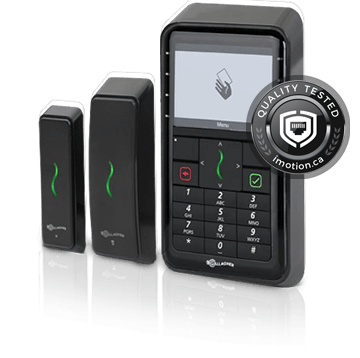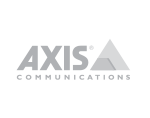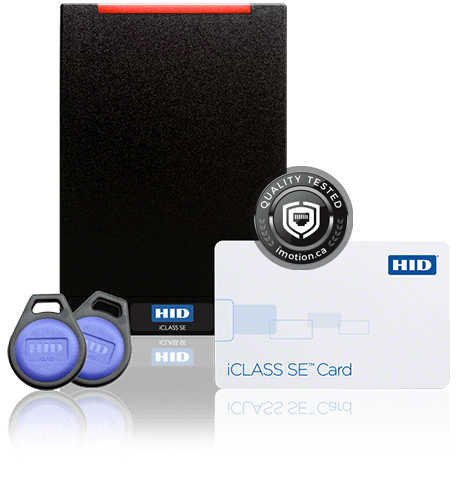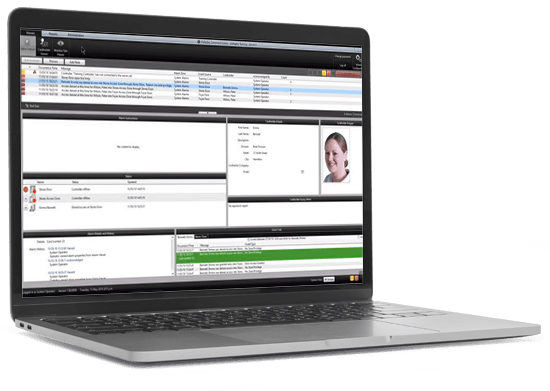The different Technologies
iMotion uses all identification technologies from the simplest to the most advanced whatever the type of identification. The choice of technology for an access system depends on several criteria. Security is the most important element but ease and comfort of use are increasingly crucial.
Contact-free technologies: RFID
RFID stands for Radio Frequency Identification. The reader sends a signal on a set frequency to a radio tag located in the read field. When the tag, also known as a marker or transponder, is “awoken” by the reader, it sends a signal back and a dialogue is established according to a predefined communication protocol. Certain tags include further memory that can write data. To communicate, the tag and the reader must be on the same frequency but, similarly to a radio, these frequencies cover a spectrum ranging from low to very high frequencies.
Low frequency - 125 KHz
The badge’s serial number is recorded in the electronic chip in the badge. The antenna (or reader) determines the reading distance between it and the badge. From 30cm, it is called hands-free technology. In the access control and identification industry, 125 kHz technology revolutionised the market by offering unrivalled value for money. Robust, without wear and tear and easy to set up, this technology has been a worldwide success and today represents the benchmark.
HF - 13,56 MHz : Mifare, Mifare+, Desfire, iCLASS®, Legic...
This was the first RFID technology to have international standards (ISO 14443-A/B and ISO 15693). It is the ideal choice when speed, security and memory capacity are required. The chip’s memory can store different information (photographs, text, etc.) for access control or other applications, for example electronic money. For access control, high frequency increases security as an encrypted number can be entered into the badge’s memory using an encoder. Biometrics are useful in this case; the fingerprint is stored in the badge.
UHF - 433 MHz, 863 to 915 MHz, 2.45 GHz
With this frequency, the badge can be read at a distance of several metres, for example at a toll gate. The serial number in the badge’s chip is still being read, but the badge has a battery that is only activated when it is in the reader’s field, thus increasing the reading distance. It is called an active badge.













